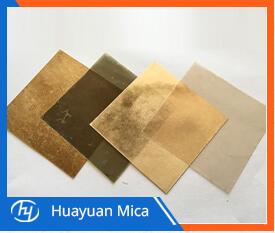Compared to the more common muscovite, biotite is also one of the mica minerals, also a silicate mineral. Black mica is mainly produced in metamorphic rocks and also in other rocks such as granite. Black mica has a color ranging from black to brown, red or green, with a glassy luster. The shape is plate shape or column shape. The crystal form of biotite is the same as that of phlogopite. The color is black, dark brown, sometimes with light red, light green or other shades. It is light reddish-brown with high titanium and green when it is rich in high-priced iron. Transparent to opaque. The glass is shiny and the black is semi-metallic. Hardness 2-3, specific gravity 3.02-3.12. The biotite can be etched into other minerals such as chlorite, muscovite and sericite by the action of hot aqueous solution. Because of its high iron content and poor insulation properties, biotite is far less than muscovite. Black mica flakes are often used as building material fillers. The large-sized black mica is easily identified in the diagenetic and superficial diagenes according to its flaky form, deeper color and elasticity, with complete cleavage of mica, and slightly magnetic properties after heating. Especially in acidic or alkaline rocks, most of them contain biotite. The chemical composition of biotite: K(Mg, Fe2+)3(Al, Fe3+)Si3O10(OH,F)2, the isomorphism is replaced by a wide range of similarities, so the biomica produced in different rocks has a large chemical composition. Biotite in general acidic and alkaline magmatic rocks, high in FeO and low in MgO; biotite in basic and ultrabasic rocks, high in MgO and low in FeO; biotite in alkaline pegmatite, low in MgO And Fe2O3 is relatively higher.
